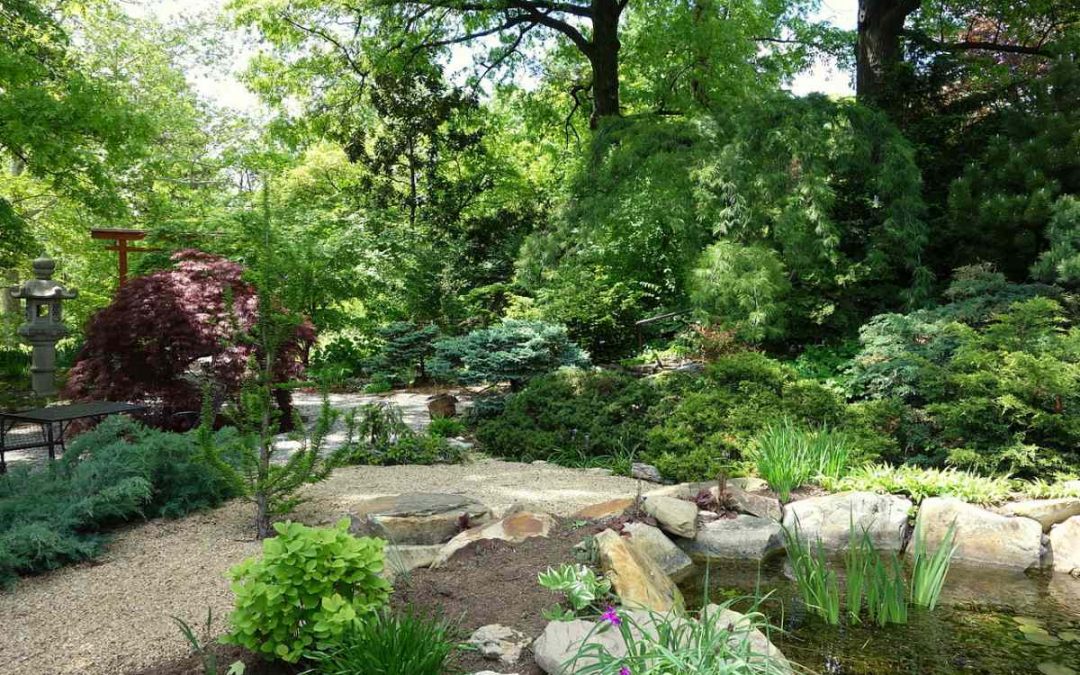After a visit to the Cincinnati Zoo & Botanical Garden, you may feel inspired to transform your landscape into a native plant garden. With potentially hundreds of trees, shrubs, and flowers to choose from, the long list can be quite overwhelming. It might surprise you that not all Ohio-native plants can thrive in your area. To save you from hours of research, this article will cover some of the best native plants for Cincinnati.
In this article
- Best Native Plants for Cincinnati, OH
- How to Choose Native Plants for Your Cincinnati Landscape
- FAQ About Native Cincinnati Plants
- Where to Find Native Plants in Cincinnati
Best Native Plants for Cincinnati, OH
1. Blue False Indigo (Baptisia australis)
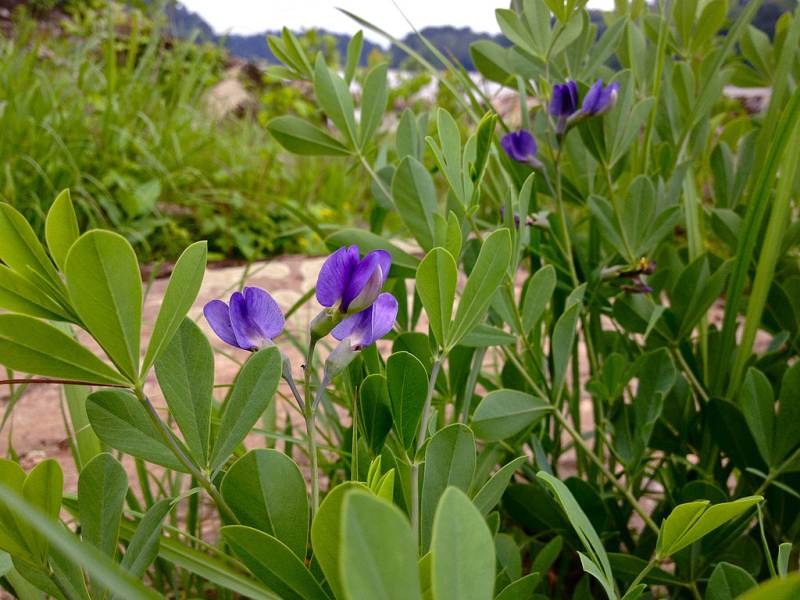
Photo Credit: Fritzflohrreynolds / Wikimedia Commons / CC BY-SA 3.0
The blue false indigo is a valuable addition to your Cincinnati garden. It is great for a specimen plant or in small groups, with bloom colors ranging from purple to blue. Blue false indigo bears spikes of pea-shaped indigo blue flowers that last for approximately 3 weeks. This plant is of great value to bumblebees, so they offer more than just aesthetics.
On an important note, several parts of this plant may be toxic if ingested. Children may be most vulnerable to this plant’s toxicity, so make sure your little ones don’t get too curious when playing outdoors.
Plant type: Upright perennial
USDA Hardiness Zone: 3-9
Sun: Full sun
Soil: Loam, Sand
Duration: Perennial
Bloom time: April – July
Water needs: Low, average
Mature height: 3 to 4 feet
Potential hazards: Toxic if ingested.
2. Common Milkweed (Asclepias syriaca)
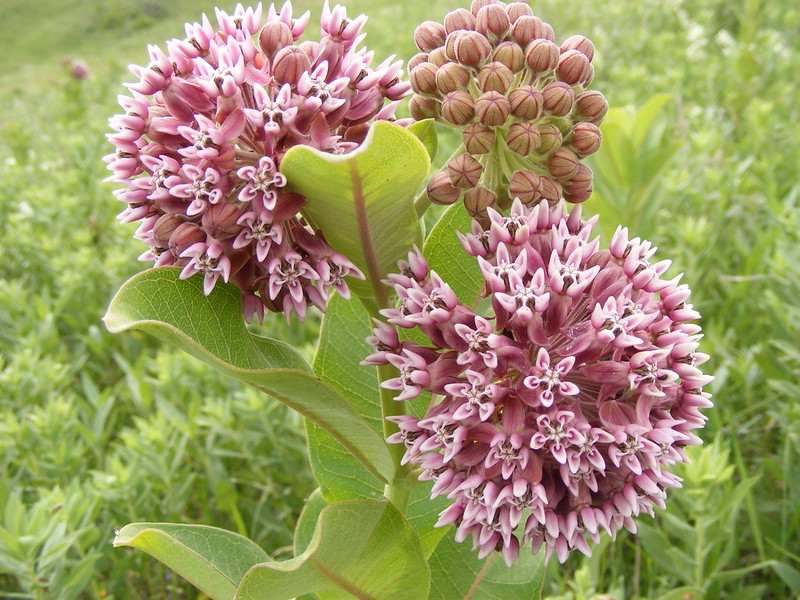
Photo Credit: USFWS Mountain-Prairie / Flickr / CC BY 2.0
This is one of the easiest and fastest milkweeds to grow in Cincinnati. Common milkweed is a great choice for flower gardens, or to create a natural setting on your property. This native plant produces clusters of starry, pinkish-purple flowers that bloom during the summer.
Additionally, common milkweed gives way to prominent seed pods in the fall. If you enjoy dried flower arrangements, these pods can be a great addition! Common milkweed is also vital to the survival of monarch butterflies. Add this native plant to your backyard to help boost the local ecosystem.
It is important to note that eating milkweed is not recommended. Boiling the sap may still not be enough to eliminate this plant’s toxicity.
Plant type: Rhizomatous perennial
USDA Hardiness Zone: 3-9
Sun: Full sun
Soil: Chalk, clay, loam, sand
Duration: Perennial
Fragrance: Sweetly scented
Bloom time: June – August
Water needs: Low, average
Mature height: 3 to 4 feet
Potential hazards: Toxic if ingested
3. Swamp Thistle (Cirsium muticum)
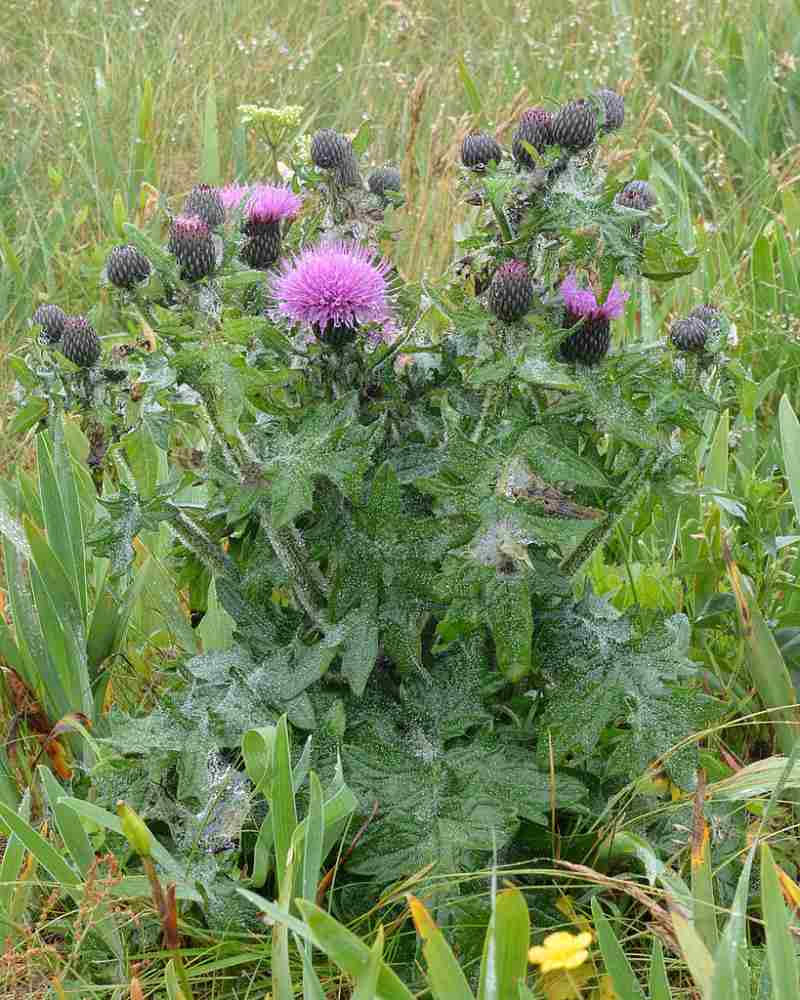
Photo Credit: Ryan Hodnett / Wikimedia Commons / CC BY-SA 4.0
The swamp thistle is highly valued as a nectar plant. It attracts bees, butterflies, and hummingbirds. This biennial plant produces deeply lobed leaves in the first year and flowers in the second year.
The flowers produced by this plant give way to small seeds with white hair tufts. Songbirds will generally eat the seeds and use the hair tufts to build their nests. Given its biennial nature, the swamp thistle will die after flowering.
Plant type: Tall biennial
USDA Hardiness Zone: 2-9
Sun: Full sun, partial shade
Soil: Sand
Duration: Biennial
Bloom time: July – September
Water needs: Average, high
Mature height: 2 to 7 feet
4. Common Hackberry (Celtis occidentalis)
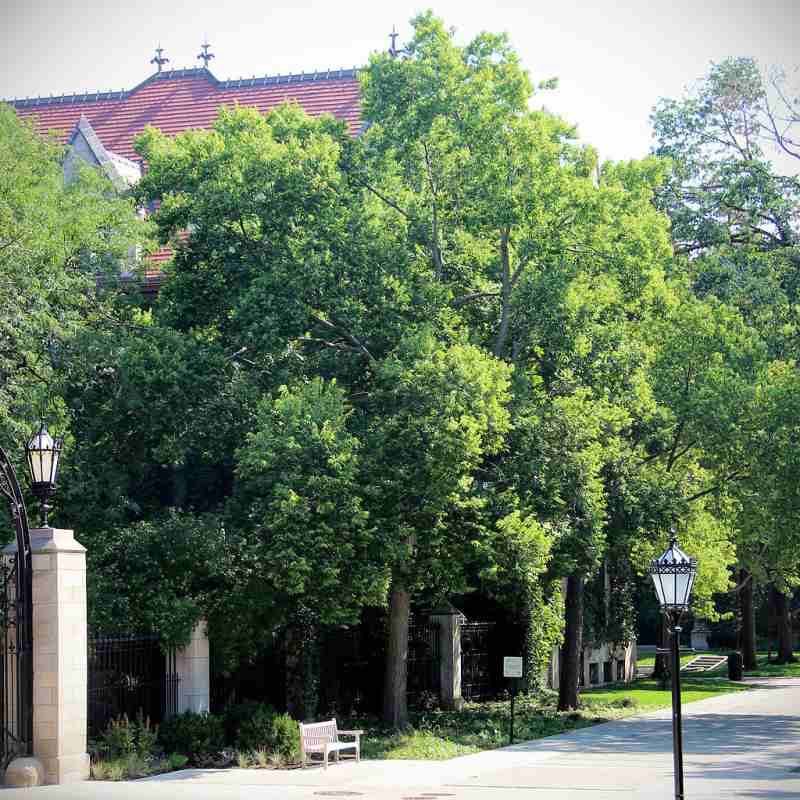
Photo Credit: Adam Shaw / Wikimedia Commons / CC BY-SA 3.0
This native plant is a medium to large deciduous tree, with glossy to dull green leaves that turn yellow in the fall. The common hackberry produces greenish male and female flowers in the spring. They provide nectar and pollen for bees, butterflies, and hummingbirds. The female flowers are followed by a heavy crop of edible berries that many birds relish.
Overall, the common hackberry is a tough shade tree that can be used as a lawn tree.
Plant type: Tree
USDA Hardiness Zone: 2-9
Sun: Full sun, partial shade
Soil: Loam, clay, sand
Duration: Perennial
Bloom time: April – May
Water needs: Low, average
Mature height: 40 to 60 feet
5. Flowering Dogwood (Cornus florida)
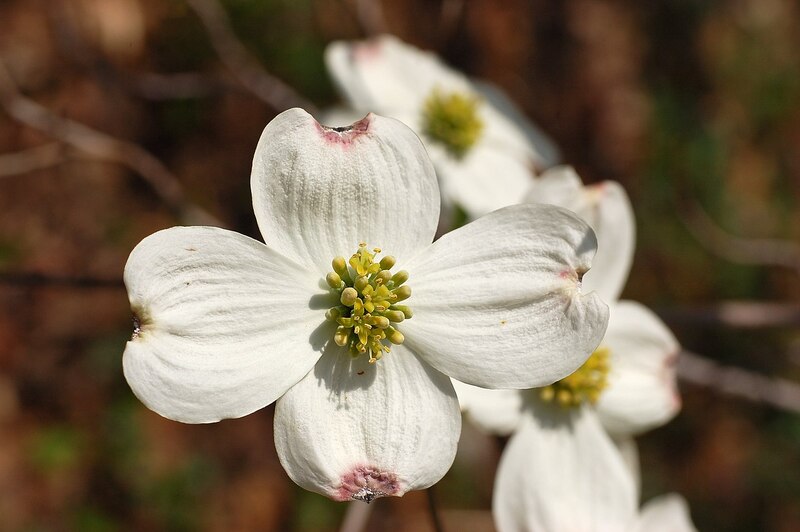
Photo Credit: Photo by and (c)2007 Derek Ramsey (Ram-Man) / Wikimedia Commons / CC BY-SA 2.5
Flowering dogwood is a popular, showy plant that can be used as a large shrub or a small deciduous tree. Many gardeners or landscapers throughout the Midwest regard this plant as one of the best small flowering trees, with no routine pruning required. Overall, it can serve as a specimen plant near patios and lawns, or in shrub borders.
Flowering dogwood blossoms give way to rounded orange-red fruits from early summer. This plant attracts birds and butterflies.
Plant type: Shrubs, trees
USDA Hardiness Zone: 5-9
Sun: Full sun, partial shade
Soil: Clay, loam, sand
Duration: Perennial
Fragrance: Sweet honeysuckle
Bloom time: March – June
Water needs: Average
Mature height: 15 to 30 feet
6. Yellow Buckeye (Aesculus flava)
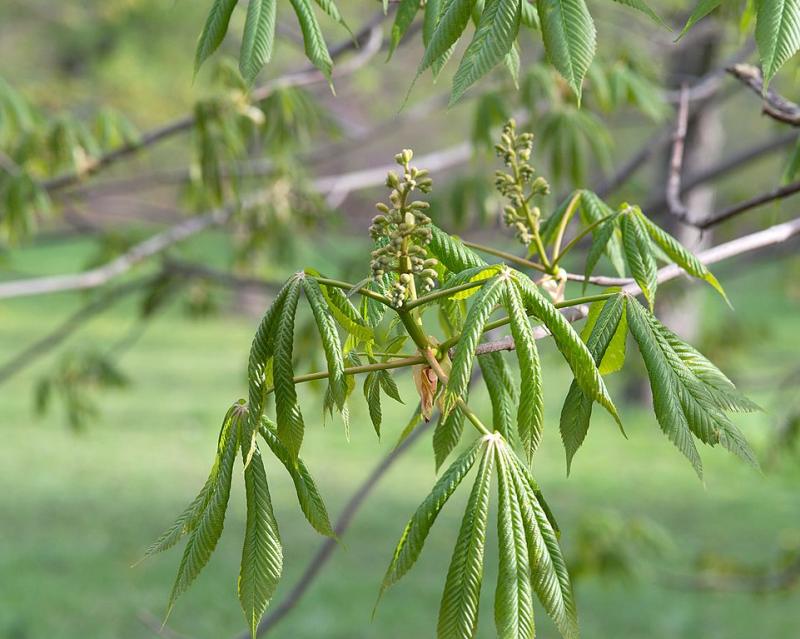
Photo Credit: Plant Image Library / Wikimedia Commons / CC BY-SA 2.0
Yellow buckeye is a deciduous tree that must be planted in rich, moist, well-drained soil. If your property has a large lawn, then this plant works great as a shade tree. The foliage turns brilliant yellow to pumpkin-orange in the fall, giving your backyard a picturesque feel.
The flowers give way to smooth, pear-shaped capsules that contain one or two buckeyes, justifying this plant’s common name. What separates this tree from the Ohio buckeye (aesculus glabra) is the small teeth along the margin of the leaflet.
It is important to note that all parts are mildly poisonous if ingested, but can be severely toxic to horses, dogs, and cats.
Plant type: Tree
USDA Hardiness Zone: 3-8
Sun: Full sun, partial shade
Soil: chalk, clay, loam, sand
Duration: Perennial
Bloom time: April to June
Water needs: Average
Mature height: 50 to 70 feet
Potential hazards: Toxic to dogs, cat, and horses; all parts are mildly poisonous by ingestion
7. Red Oak (Quercus rubra)
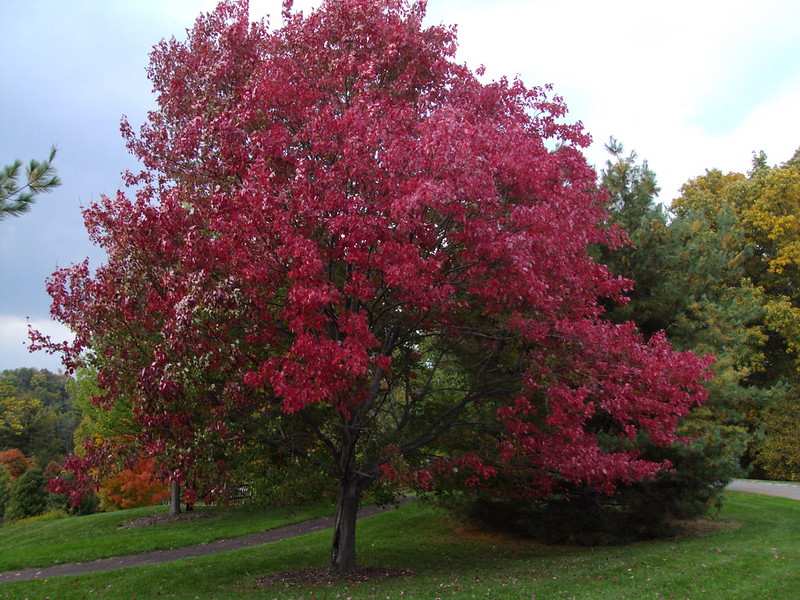
Photo Credit: denisbin / Flickr / CC BY-ND 2.0
Red oak is a fast-growing deciduous tree, a common symbol of strength and endurance in North America. It is a popular shade and street tree that can be easily spotted in Cincinnati, but can also serve as a great specimen tree for large landscapes.
Red oak has a beautiful spring foliage of broad, dark green leaves that turn bright red in the fall. Once the first crop of acorns are produced, they become a valuable source of food for small mammals and birds. A moist but well-drained soil is required to ensure these native trees grow properly.
Plant type: Tree
USDA Hardiness Zone: 5-9
Sun: Full sun, partial shade
Soil: clay, loam, sand
Duration: Perennial
Bloom time: March to May
Water needs: Low, average
Mature height: 50 to 70 feet
Potential hazards: Leaves and acorns may be toxic to some animals; non-toxic to humans
8. Wild Hydrangea (Hydrangea arborescens)
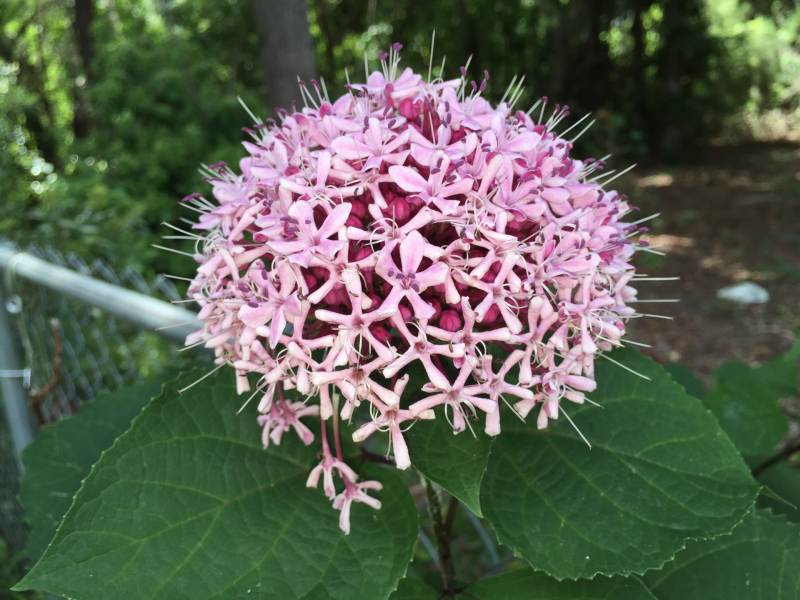
Photo Credit: Public Domain Pictures
Wild hydrangea is a small, multi-stemmed shrub with greenish-white flowers as its main landscape feature. It is a great plant for shrub borders, or as a flowering hedge. Once the fall season kicks in, this plant’s foliage will turn yellow.
Pruning wild hydrangea, sometimes even to the ground, is highly recommended to encourage the growth of large flowerheads. This process should take place during late winter or early spring.
Plant type: Shrub
USDA Hardiness Zone: 3-9
Sun: Partial shade
Soil: rich, well-drained, moist
Duration: Perennial
Fragrance: Mild fruity
Bloom time: May – August
Water needs: Average
Mature height: 3 to 5 feet
9. Black-eyed Susan (Rudbeckia hirta)
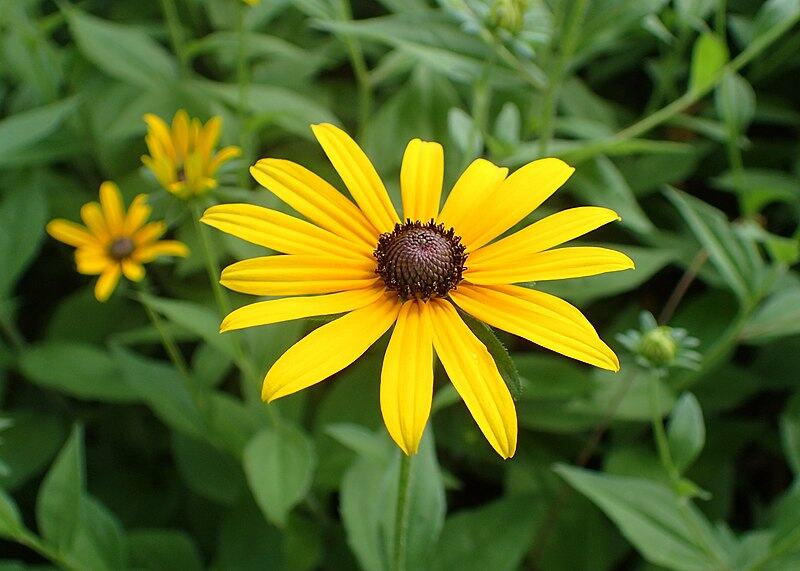
Photo Credit: Krzysztof Ziarnek, Kenraiz / Wikimedia Commons / CC BY-SA 4.0
The name of this plant is derived from the dark brown center of its daisy-like flower head. Black-eyed susan does very well in landscapes, butterfly gardens, or containers. Additionally, they can serve as great cut flowers.
This plant’s flowers bloom regularly when exposed to full sunshine. Black-eyed susan attracts butterflies, bees, and other pollinators due to the nectar found in its flowers. Once established, this plant will tolerate droughts.
Plant type: Short-lived perennial
USDA Hardiness Zone: 3-8
Sun: Full sun, partial shade
Soil: Clay, loam
Duration: Annual, biennial, perennial
Fragrance: Sweet
Bloom time: March – November
Water needs: Low, average
Mature height: 1 to 2 feet
How to Choose Native Plants for Your Cincinnati Landscape
Cincinnati lies in USDA Plant Hardiness Zone 6, a vital factor to consider before planting new shrubs, flowers, or trees. This will also help gardeners and landscapers to distinguish between non-native and Ohio native plants. However, your backyard or garden is not the same as everyone else’s in Cincinnati.
Before selecting new native plants for your garden, you should consider the type of soil, level of sun exposure, and the watering capabilities of your landscape. For example, placing a native plant under the shade when it requires full sun will not allow it to thrive and grow properly.
FAQ About Cincinnati Native Plants
The pawpaw is the native fruit of Ohio. Cincinnatians will know that this fruit can be found or eaten mid-to-late September. As for the name, it is derived from the fruit’s black seeds that resemble an animal’s paw.
The problem with invasive species is that they compete for space with native plants. Garlic mustard is among the worst invasive plants you may encounter in Ohio. To make matters worse, the flowers of this plant will emit a strong odor of garlic when crushed.
To get rid of the garlic mustard plant, you can simply pull them out by hand or spray them with glyphosate.
In January of 2023, the Ohio Department of Natural Resources made it illegal to plant, sell, or grow Callery pear trees in the entire state due to their invasiveness. Additionally, this tree is likely to cause harm to the local economy and ecosystem. For all these reasons, the Callery pear tree was added to the list of invasive plants no longer allowed to thrive in Ohio.
To learn more about other invasive plant species, visit the official webpage of the Ohio Department of Agriculture.
Native plants are essential to preserve the local ecosystem. It’s not just about how good they look in your yard, but how they serve as a valuable source of food or nectar to many animals in the area.
Here are some reasons to grow Cincinnati native plants:
• Save water
• No fertilizers or pesticides needed
• Rarely invasive
• Preserve biodiversity
• Require less maintenance
• Save you money
Where to Find Native Plants in Cincinnati
Homeowners in Cincinnati may find native plants naturally growing around their property, or visit local garden centers to select from a wide variety of native plants.
Here are some garden centers located in and around the Greater Cincinnati area:
If you prefer hiring a professional to maintain your lawn and garden, connect with a local lawn care professional who can take the job off your hands.

